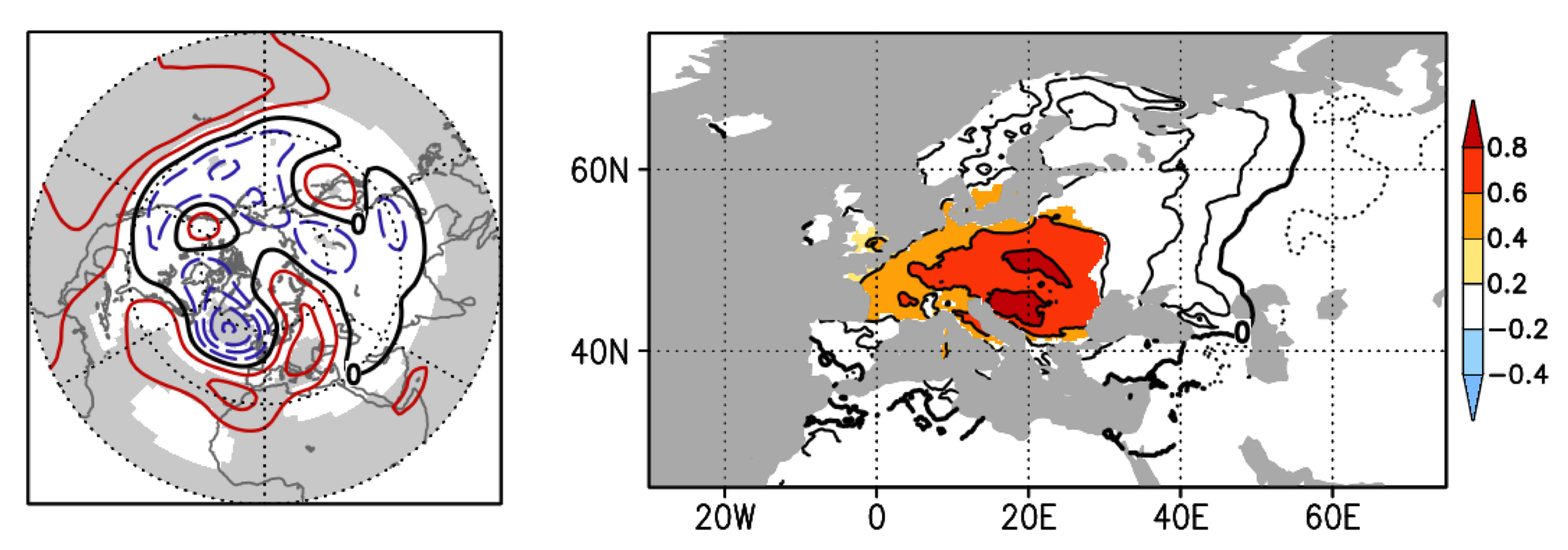This is shown in a new study led by Martin King at the Bjerknes Centre and Uni Research. King and his team have explored whether conditions in the Pacific allow us to predict months ahead whether fall and winter in Europe will be warm or cold, dry or wet.
Strongest influence in November
During El Niño events, warmer surface water in the east Pacific Ocean changes the world’s weather. This phenomenon occurs every two to seven years and – after the seasonal changes – accounts for the largest variations in the world’s weather. El Niños are linked to droughts in Australia and East Africa, and to floods in Peru.
How much Europe is affected is still an open question. Previous research has focused mostly on the winter months, when the El Niño phenomenon is the strongest. The new study shows that, in Europe, the effect on weather is still stronger in fall. Martin King and his colleagues find that El Niños are associated with wetter and warmer weather in large parts of Europe in November.
Ocean influences weather months ahead
Martin King hopes that renewed interest in the seasonal variation of El Niño tele-connections in Europe will contribute to further progress in climate predictions on monthly and seasonal scales.
“Predictions of the El Niño in winter are already very good. The summer before, we will know“, says King.
Predictions of weather and climate for months, seasons and decades ahead lie between normal weather forecasts and climate projections for the coming century – concerning both what influences the climate on these time-scales, and the methods required to make such predictions.
Changes in the oceans occur more slowly than in the atmosphere, and this long-term memory of the ocean is a major key to seasonal and decadal predictions. Pacific temperature patterns like El Niño is only one of the factors that can affect weather in Europe on long-term scales. Other players are sea surface temperature in the Atlantic, Arctic sea ice, Eurasian snow cover and conditions in the stratosphere, high above what we normally consider as weather.
Bjerknes Centre, Uni Research and University of Bergen scientists Noel Keenlyside, Stefan Sobolowski and Camille Li are among King’s co-authors, as are colleagues from the University of Zagreb, the University of Barcelona, Barcelona Supercomputing Center and the Abdus Salam International Centre for Theoretical Physics in Trieste.

Reference
King, M.P., I. Herceg-Bulić, I. Bladé, J. García-Serrano, N. Keenlyside, F. Kucharski, C. Li, and S. Sobolowski, 0: Importance of late fall ENSO teleconnection in the Euro-Atlantic sector. Bull. Amer. Meteor. Soc., 0, https://doi.org/10.1175/BAMS-D-17-0020.1

